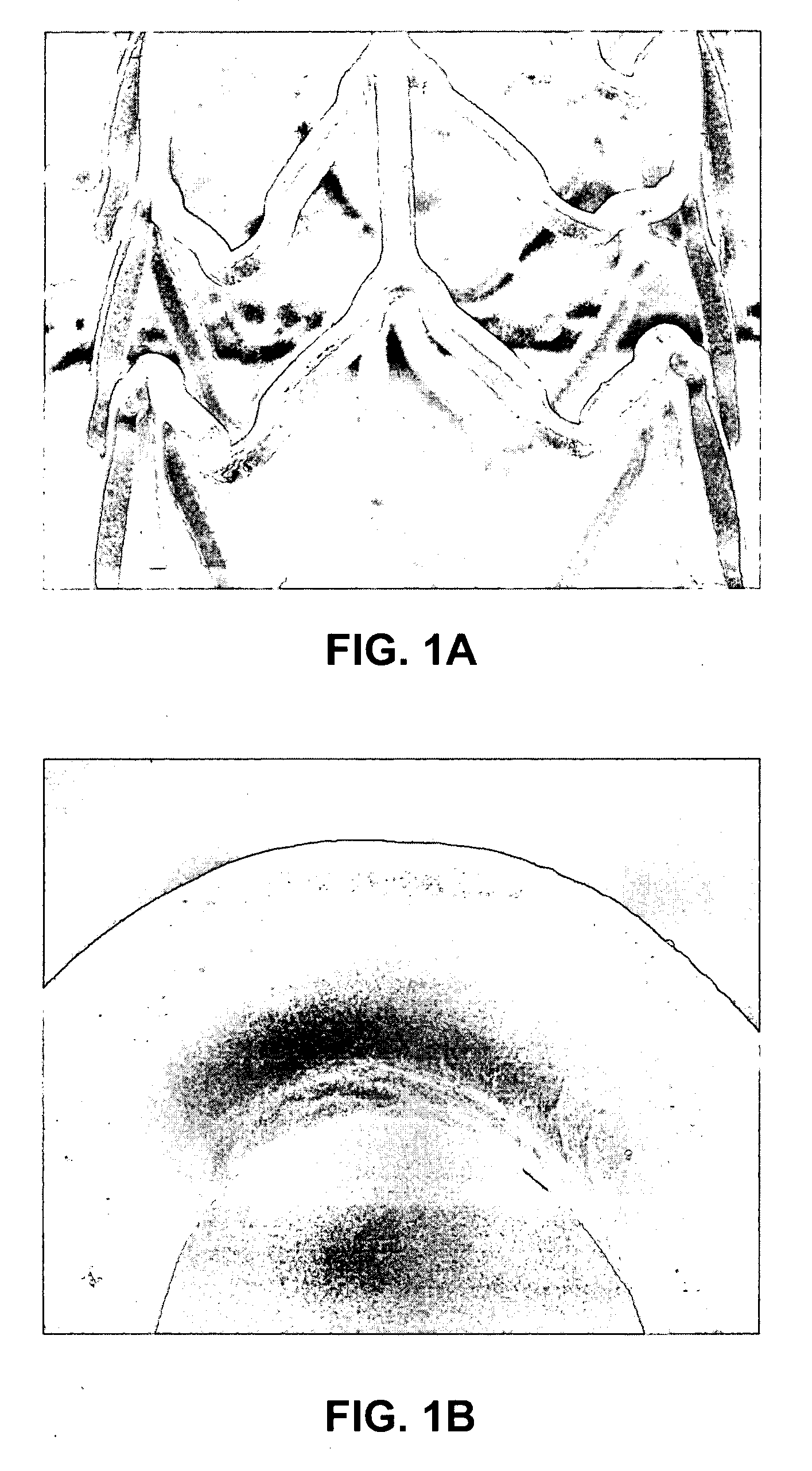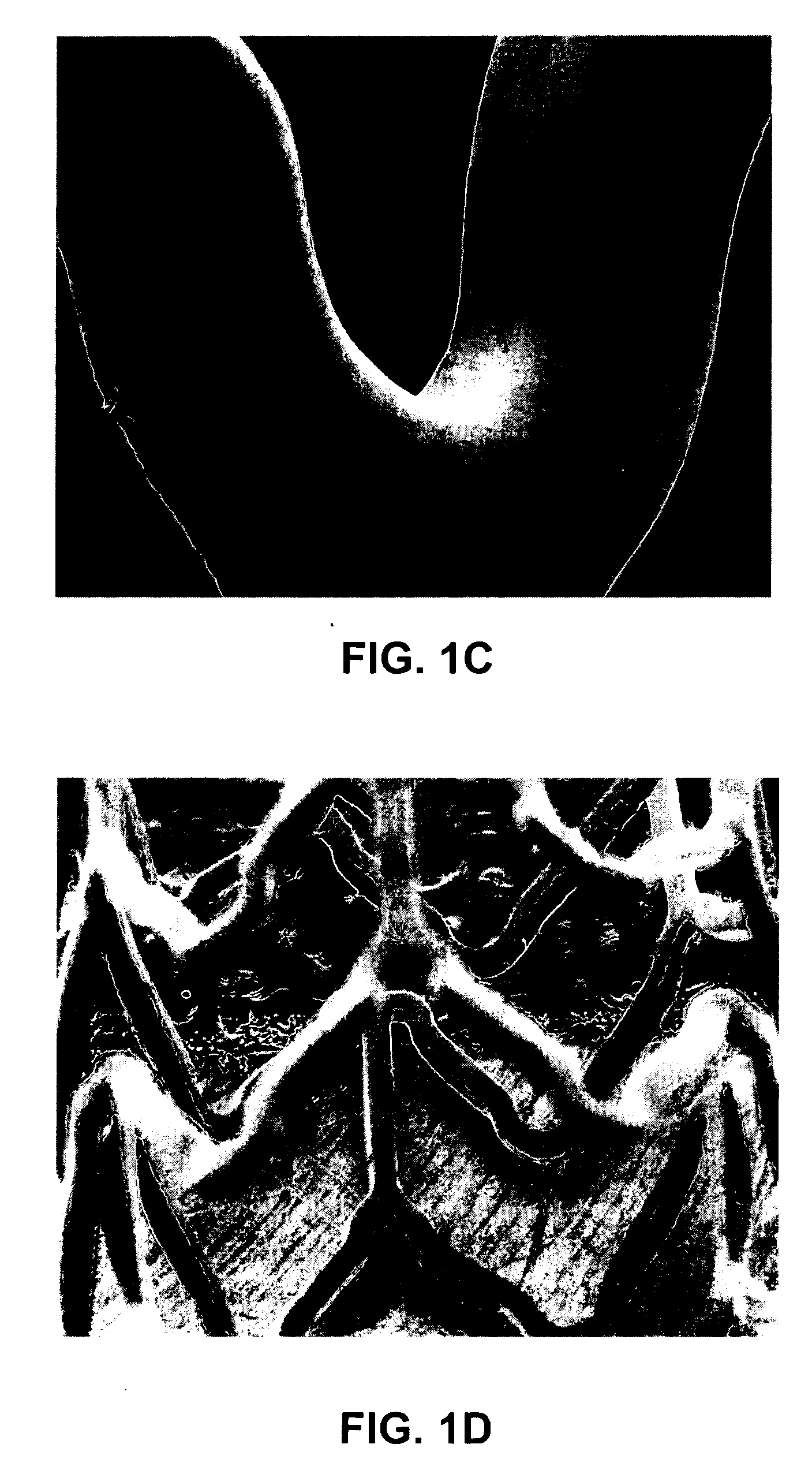Coatings for implantable medical devices comprising hydrophilic substances and methods for fabricating the same
- Summary
- Abstract
- Description
- Claims
- Application Information
AI Technical Summary
Problems solved by technology
Method used
Image
Examples
example 1
Synthesis of an ABA Block Copolymer #1 (PSPMA-PBMA-PSPMA)
[0082] As a first step, a monomer BMA was dissolved in 2-butanone (also known as methyl ethyl ketone) and an initiator XDC was added. The amounts of components are summarized in Table 3.
TABLE 3Experimental amountof the componentNo.Componentmmolg1BMA140.70019.9822-butanone—59.413XDC0.2870.1151
[0083] The solution of BMA and XDC in 2-butanone was placed into a borosilicate vial, purged with dry nitrogen for about 30 minutes and the vial was sealed. The contents of vial were subjected to UV radiation at a wavelength within a range of between about 310 nm and about 400 nm, for about 12 hours. The vial was then opened and the contents were added dropwise to ethanol cooled to a temperature of about −76° C. As a result, poly(butylmethacrylate)-XDC (PBMA-XDC) was precipitated. The precipitate was collected using a vacuum funnel and vacuum-dried.
[0084] As a second step, PBMA-XDC obtained as described above was combined with 3-sulfop...
example 2
Synthesis of an ABA Block Copolymer #2 (PMAA-PBMA-PMAA)
[0087] As a first step, PBMA-XDC can be synthesized as described in Example 1. As a second step, PBMA-XDC can be combined in a vial with methacrylic acid (MAA) and 2-butanone in the amounts shown in Table 5.
TABLE 5Theoretical amountExperimental amountof the componentof the componentNo.Componentmmolgmmolg1PBMA-XDC0.0162.500.0132.0322-butanone—12.40—10.193Methacrylic acid7.200.6259.100.78425
[0088] The blend of PBMA-XDC, methacrylic acid and 2-butanone can be subjected to UV radiation at a wavelength within a range of between about 310 nm and about 400 mm, for about 32.5 hours. The vial can be then opened, the solvent can be removed by evaporation, the contents can be dissolved in tetrahydrofuran and the solution can be added dropwise to water and vigorously stirred causing precipitation of a poly(methacrylic acid)-block-poly(butylmethacrylate)-block-poly(methacrylic acid)-XDC. The precipitate can be collected using a vacuum fun...
example 3
Synthesis of an ABA Block Copolymer #3 (PEG-acrylate-PBMA-PEG-acrylate)
[0090] As a first step, PBMA-XDC was synthesized as described in Example 1. As a second step, PBMA-XDC was combined in a vial with acryloyl poly(ethylene glycol) (acryloyl-PEG) and 2-butanone in the amounts shown in Table 6.
TABLE 6Theoretical amountExperimental amountof the componentof the componentNo.Componentmmolgmmolg1PBMA-XDC0.00641.000.00590.9322-butanone—12.40—10.083Acryloyl-PEG0.6250.250.7780.29176
[0091] Acryloyl-PEG is a product of esterification of acrylic acid by PEG and has a formula (IX):
[0092] A low molecular weight acryloyl-PEG oligomer with the number-averaged molecular weight (Mn) of about 375 was used, corresponding to the value “x” in formula of (X) of about 7. The blend of PBMA-XDC, acryloyl-PEG and 2-butanone was subjected to UV radiation as described in Example 2, for about 43 hours. The vial was then opened, the contents were added dropwise to water and vigorously stirred at a temperatu...
PUM
| Property | Measurement | Unit |
|---|---|---|
| Mass | aaaaa | aaaaa |
| Mass | aaaaa | aaaaa |
| Mass | aaaaa | aaaaa |
Abstract
Description
Claims
Application Information
 Login to View More
Login to View More - R&D
- Intellectual Property
- Life Sciences
- Materials
- Tech Scout
- Unparalleled Data Quality
- Higher Quality Content
- 60% Fewer Hallucinations
Browse by: Latest US Patents, China's latest patents, Technical Efficacy Thesaurus, Application Domain, Technology Topic, Popular Technical Reports.
© 2025 PatSnap. All rights reserved.Legal|Privacy policy|Modern Slavery Act Transparency Statement|Sitemap|About US| Contact US: help@patsnap.com



